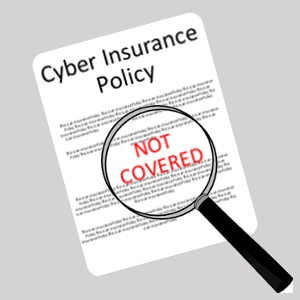In several of my most recent “Cyber Tuesday” posts, I’ve discussed the importance of developing a comprehensive cyber risk mitigation strategy which includes IT security measures, well thought out incident response, business continuity documentation and cyber insurance. A recent ransomware event at the University of Calgary shifted the focus to the cyber insurance.
Topics: Cyber Risk
A critical step of any contractual agreement between property owners and managers and their vendors (including contractors) is a careful review of the provisions affecting insurance and legal indemnification. The difference between a thoughtfully negotiated contract and one that is “off the shelf” or, even worse, none at all may be the difference between accepting liability where never intended.
Topics: Insurance
One of the most significant cyber threats to any company’s security is the Rogue Employee. Who is this person? Someone who has been entrusted with access to the system(s); (i.e. databases, customer records, HR records, confidential email, etc.) and who chooses to hurt the company and fellow employees by intentionally performing a wrongful act or providing another with the ability to do so.
Topics: Cyber Risk
It was not a very happy new year for Chipotle having been slapped with a shareholder class action lawsuit for “having known the fast food chain had inadequate safety practices but lied and omitted material facts in reports to stockholders".
Topics: General Coverage
Hurricanes, Tropical Storms and Insurance – Oh My
As the world is ever changing, so are the way insurers interpret the natural disasters and how they will respond to cover these terrible events. Over the years, the U.S. has seen an increase in earthquakes, tornadoes, hurricanes, blizzards and more. The insurance industry now has created a stricter view of how they will cover these events. In particular, as we have seen with Hurricane Katrina and Hurricane Sandy, the insurance industry has developed a new terminology and deductible related, specifically, to “named storm/named windstorm.”
Topics: Seasonal & Weather
The Battle Between "Blanket" Additional Insured Endorsement and the Underlying Contract
The construction and real estate industry continue to grow and so do the risk exposures from a fundamental inconsistency between a contract’s commercial intent and insurance policy language. “Additional Insured” is a very common requirement in a real estate or construction contract and many times there is a distinct lack of specificity with what is, actually, being required and why the provision is appropriate. Additional Insured status provides vicarious liability coverage to an outside entity, usually, an owner or general contractor, under the subcontractor’s policy. It is often a requirement in construction contracts, and it can be the source of insurance disputes if not handled correctly given the changes in the regulatory framework of today’s insurance policies.
Topics: Construction and Development
One of the areas often overlooked, but vital to an insured, is the defense costs coverage a liability policy provides. As some insureds may be aware, there are two types of defense costs payments, those policies that pay “in addition” to the limits and those whose payments are “within” the policy limits.
Topics: Construction and Development
Determining Soft Costs Coverage Under Builders Risk Policy

Soft cost, or delay in the project completion coverage has been a hot topic of discussion and concern recently due to the unique claims scenarios that occur during a construction phase of a project. At first glance, the term “soft costs” seems easy to explain. But it's actually a more complex subject.
Topics: Construction and Development
Understanding Insurance Terms - Actual Cash Value vs. Replacement Cost
It is vital to understand specific terms found in insurance policies. The inability to do so may result in an unwanted surprise such as a lower than anticipated claim payment following a loss. For example, Actual Cash Value (ACV) and Replacement Cost (RC) are two different methods of valuation that will determine how the insured is indemnified.
Topics: Insurance
Construction Drones: Who's At Fault When Skynet Takes Over
It should not be surprising that as technology evolves, so does the way that these innovations are implemented in everyday business. The construction industry tends to exemplify this notion, as new equipment that increases efficiency at the worksite is utilized and embraced. Construction giant, Komatsu, announced this month that it plans to release a series of drones that will be capable of providing the heavy lifting of the foundation work in new construction, deeming the process: “Smart Construction.” This includes equipment such as “aircraft, bulldozers, and excavators” operating unmanned, all of which could, drastically, change the landscape of construction contracting.
Topics: Construction and Development

